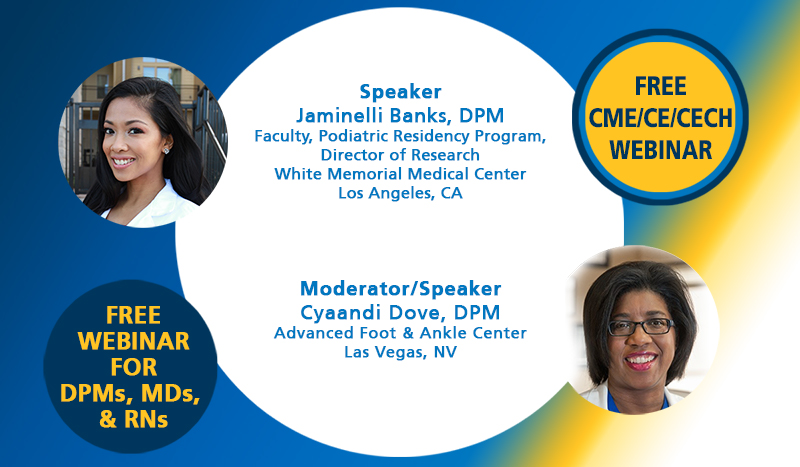
Accessing Effective Wound Care:
A Patient Centered Approach Utilizing Topical Wound Oxygen at Home

This webinar will review the scientific rationale behind the need for supplemental oxygen in non-healing wounds and outline the differences between available delivery systems. The speakers will elaborate, utilizing case examples, on how cyclical-pressure topical wound oxygen therapy can be utilized safely at the patient’s home to successfully address the many barriers to providing effective wound care.
Learning Objectives:
- Discuss both the historical and new barriers in accessing effective wound care and identify how a patient-centered approach improves access and compliance.
- Review the scientific rationale and available delivery systems for providing supplemental oxygen to non-healing wounds.
- Describe clinical cases on how cyclical-pressure topical wound oxygen improves wound healing, recovery and reduces recurrence long term.

This Webinar is Approved for 1 CME/CECH Credit Hours
PRESENT e-Learning Systems is approved by the Council on Podiatric Medical Education as a provider of continuing education in podiatric medicine. PRESENT e-Learning Systems has approved this activity for a maximum of 1 continuing education contact hours.
PRESENT e-Learning Systems is approved by the Council on Podiatric Medical Education as a provider of continuing education in podiatric medicine. PRESENT e-Learning Systems has approved this activity for a maximum of 1 continuing education contact hours.

Physicians: AffinityCE is accredited by the Accreditation Council for Continuing Medical Education to provide continuing medical education for physicians.
AffinityCE designates this live educational activity for AMA PRA Category 1 CreditsTM. Physicians should only claim credit commensurate with the extent of their participation in the activity. A maximum of 1 AMA PRA Category 1 CreditTM will be awarded.
Nurses: CE is provided for this program through collaboration between PRESENT e-Learning Systems and AffinityCE. AffinityCE is accredited as a provider of nursing continuing professional development by the American Nurses Credentialing Center’s Commission on Accreditation (ANCC). This activity provides 1 contact hour of nurse CE credit.
AffinityCE designates this live educational activity for AMA PRA Category 1 CreditsTM. Physicians should only claim credit commensurate with the extent of their participation in the activity. A maximum of 1 AMA PRA Category 1 CreditTM will be awarded.
Nurses: CE is provided for this program through collaboration between PRESENT e-Learning Systems and AffinityCE. AffinityCE is accredited as a provider of nursing continuing professional development by the American Nurses Credentialing Center’s Commission on Accreditation (ANCC). This activity provides 1 contact hour of nurse CE credit.


Comments
There are 0 comments for this article